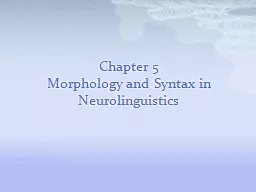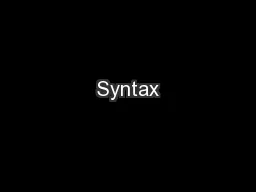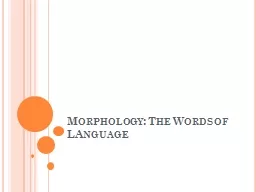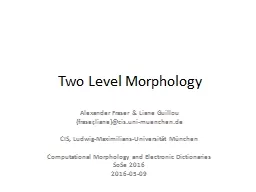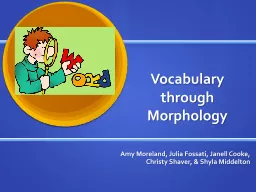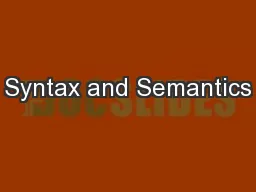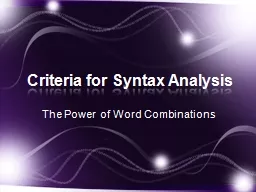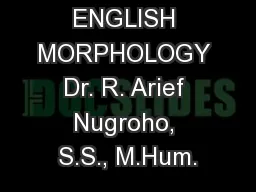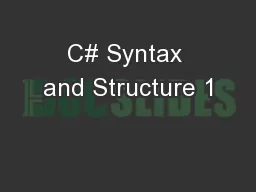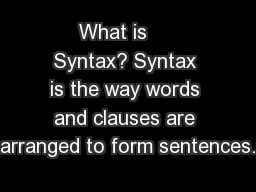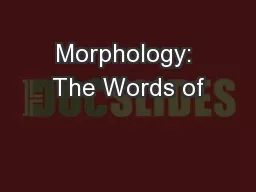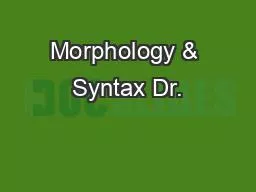PPT-Chapter 5 Morphology and Syntax in Neurolinguistics
Author : tawny-fly | Published Date : 2018-01-30
Types of Linguistic Theories Prescriptive prescriptive linguistics is an oxymoron Prescriptive grammar how people ought to talk Descriptive provide account of
Presentation Embed Code
Download Presentation
Download Presentation The PPT/PDF document "Chapter 5 Morphology and Syntax in Neuro..." is the property of its rightful owner. Permission is granted to download and print the materials on this website for personal, non-commercial use only, and to display it on your personal computer provided you do not modify the materials and that you retain all copyright notices contained in the materials. By downloading content from our website, you accept the terms of this agreement.
Chapter 5 Morphology and Syntax in Neurolinguistics: Transcript
Download Rules Of Document
"Chapter 5 Morphology and Syntax in Neurolinguistics"The content belongs to its owner. You may download and print it for personal use, without modification, and keep all copyright notices. By downloading, you agree to these terms.
Related Documents

